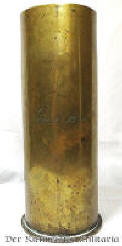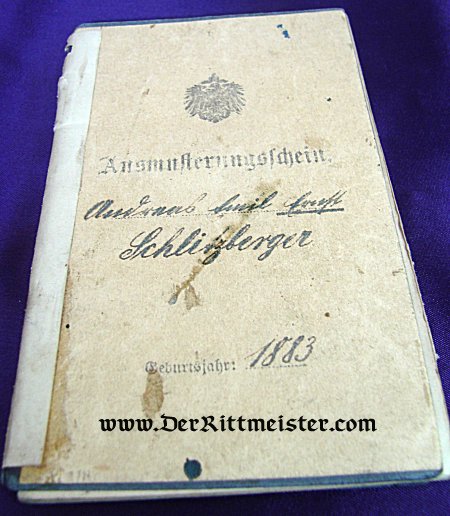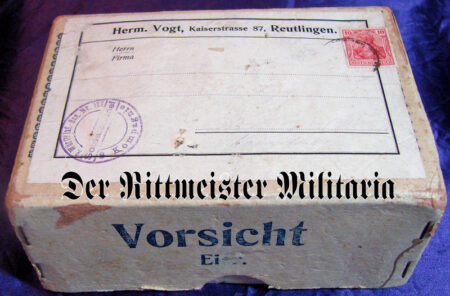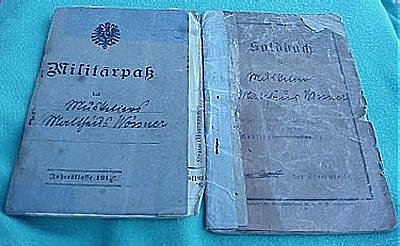Description
This is a German 75mm artillery piece shell casing that has been converted to a trench art vase. The German “77″ was officially known as the “7.7 cm Feldkanone 96 neuer Art.” (New Kind of 7.7 cm Field Cannon 96). It has been converted to a trench art vase. Trench art was created by soldiers from all WW I’s armies. When they had extra time on their hands in the trenches between battles, they took bits and pieces of gear and fashioned them into artistic objects. Some common examples were belt buckles converted into match safes, as well as jewelry and letter openers fashioned from shrapnel shards. These often-bored soldiers showed amazing creativity. A great deal of trench art also was created in hospitals as therapy for soldiers recovering from mild to severe wounds.
The 77mm Field Cannon was the German mobile artillery’s mainstay during the entire war. The field piece was hitched to a caisson and rapidly drawn by horses to new locations. Each gun’s crew consisted of five men. The cannon was capable of firing ten rounds each minute. The shell casing is made of brass. It stands 9″ tall and measures 3″ in diameter at the base. Its bottom sports numerous munitions works’ marks. It also indicates that the original shell was manufactured in 1916. Engraved on the casing’s front is “Luise 1918.”
It is a very good example of a trench art vase. It will look first-rate on any flat surface, or perhaps as some sort of display. You are only limited by your imagination.





